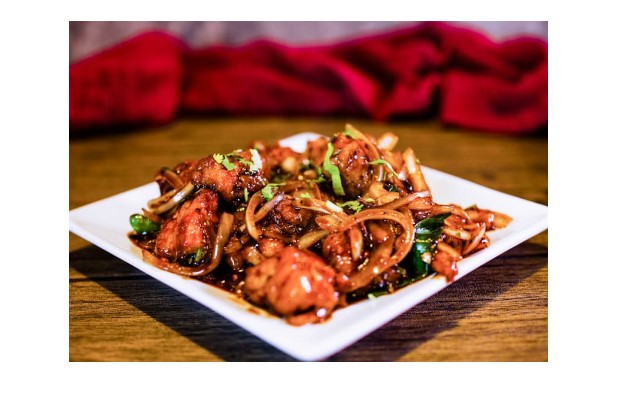Introduction:
In the rich tapestry of global culinary diversity, Halal Chinese food stands as a delightful fusion, marrying the culinary traditions of China with the dietary requirements of Halal. This harmonious blend not only caters to the needs of the Muslim community but also introduces a unique and flavorful experience for all food enthusiasts. Join us on a gastronomic journey as we delve into the traditions and flavors that define Halal Chinese cuisine.
Understanding Halal:
Halal, an Arabic term meaning “permissible” or “lawful,” refers to food that adheres to Islamic dietary laws. This includes the sourcing, preparation, and consumption of food, ensuring it complies with Islamic principles.
Halal Cuisine: A Cultural Confluence:
Halal cuisine represents the convergence of two rich and diverse culinary traditions. The traditional flavors of Chinese cooking, characterized by a balance of taste, texture, and aroma, are seamlessly integrated with Halal practices, creating a culinary experience that respects cultural and religious sensitivities.
Common Halal Chinese Ingredients:
Halal dishes feature a variety of ingredients that comply with Islamic dietary laws. These include halal-certified meat such as chicken, lamb, and beef, as well as an array of fresh vegetables, aromatic herbs, and spices. Popular staples like rice and noodles are widely used, offering a familiar and comforting base for diverse dishes.
Halal Street Food: A Culinary Adventure:
Chinese street food is renowned for its bold flavors and diverse offerings, and the Halal versions are no exception. From savory Jianbing (Chinese crepes) to spicy Lanzhou beef noodles, Halal street food provides a sensory journey through the bustling markets and vibrant flavors of China.
Traditional Halal Chinese Dishes:
Gong Bao Chicken:
A classic Sichuan dish, Gong Bao Chicken features succulent pieces of halal-certified chicken stir-fried with peanuts, vegetables, and chili peppers. The dish is known for its bold flavors and the unique numbing sensation imparted by Sichuan peppercorns.
Beef and Broccoli Stir-Fry:
This popular stir-fry combines thinly sliced halal beef with crisp broccoli florets in a savory sauce made from soy sauce, garlic, and ginger. It’s a hearty and nutritious dish that highlights the essence of Chinese stir-frying.
Vegetable Spring Rolls:
Halal Chinese vegetable spring rolls are a delicious appetizer, featuring a crispy outer layer filled with a medley of fresh vegetables. They are often served with sweet and sour sauce, adding a delightful contrast to the crunchy texture.
Sweet and Sour Fish:
Halal Sweet and Sour Fish features tender fish fillets coated in a sweet and tangy sauce made from tomatoes, pineapples, and bell peppers. This dish exemplifies the balance of flavors that is characteristic of both Chinese and Halal culinary traditions.
Exploring Halal Restaurants:
Halal Certification and Assurance:
When exploring Halal restaurants, look for establishments with Halal certification, ensuring that the food meets the required standards. Many restaurants display their certification prominently, offering transparency and assurance to diners.
Local Recommendations and Reviews:
Seek recommendations from local communities and explore online reviews to discover well-regarded Halal Chinese restaurants in your area. The experiences of fellow diners can provide valuable insights into the authenticity and quality of the culinary offerings.
Menu Diversity and Options:
A reputable Halal Chinese restaurant will offer a diverse menu, showcasing a range of dishes from different regions of China. This diversity ensures that diners can explore various flavors and culinary traditions within the Halal framework.
Culinary Events and Festivals:
Attend culinary events or food festivals that feature Halal cuisine. These events often bring together diverse culinary influences, providing an opportunity to savor authentic Halal Chinese dishes and engage with the chefs behind the creations.
Online Food Delivery Platforms:
Many Halal Chinese restaurants partner with online food delivery platforms, making it convenient for diners to enjoy these flavors from the comfort of their homes.
Conclusion:
Halal food epitomizes the beauty of cultural fusion, where the rich traditions of Chinese cuisine seamlessly integrate with Halal practices. From aromatic stir-fries to savory street food, Halal offerings provide a diverse and flavorful culinary experience. As the popularity of Halal cuisine continues to rise, exploring local restaurants and embracing the culinary traditions of this fusion becomes an enriching and delightful journey for food enthusiasts of all backgrounds. Whether dining out or savoring Chinese dishes at home, the exploration of these traditions and flavors adds a unique chapter to the global culinary narrative.
